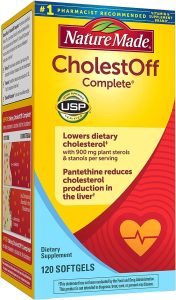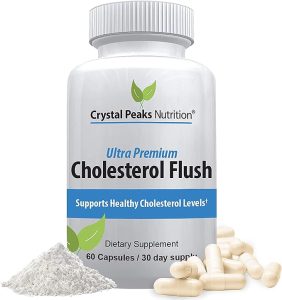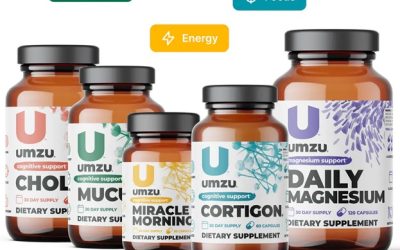The General Overview: What is Atherosclerosis?
Atherosclerosis is a progressive and complex medical condition characterized by the gradual buildup of fatty deposits, cholesterol, and other substances on the inner walls of arteries, the blood vessels responsible for carrying oxygen-rich blood throughout the body. This accumulation forms plaques, which can narrow and harden the arteries, impeding the smooth flow of blood.
The development of atherosclerosis typically begins with damage or injury to the inner lining of an artery, often initiated by factors such as high blood pressure, smoking, elevated cholesterol levels, and inflammation. In response to this damage, the body’s natural healing process involves the deposition of cholesterol, fat, calcium, and other substances at the site of injury. Over time, these deposits can grow, leading to the formation of plaques that compromise blood flow and may become unstable, increasing the risk of blood clot formation.
Atherosclerosis can affect arteries throughout the body, and its consequences depend on the specific arteries involved. Common complications include coronary artery disease, carotid artery disease, and peripheral artery disease, each posing significant risks such as heart attacks and strokes. Managing atherosclerosis often involves a combination of lifestyle changes, medications, and, in some cases, surgical interventions to address the underlying factors and reduce the risk of complications.
Atherosclerosis Treatment
Medicines
Several medications are commonly prescribed to help manage atherosclerosis and its associated risk factors. Here are some categories of medications used in the treatment of atherosclerosis along with some natural alternatives to check out.
- Statins:
- Examples: Atorvastatin, Simvastatin, Rosuvastatin
- Mechanism: Statins lower LDL (low-density lipoprotein) cholesterol levels, reducing the buildup of cholesterol in arterial plaques and helping to stabilize plaques.
- #1 Natural Alternative to Statins:
- Antiplatelet Agents:
- Example: Aspirin, Clopidogrel
- Mechanism: Antiplatelet medications reduce the risk of blood clot formation by inhibiting the aggregation of platelets. They are often prescribed to prevent clot-related complications, especially in individuals with coronary artery disease.
- #1 Natural Alternative to Antiplatelet Medication:
- Beta-Blockers:
- Examples: Metoprolol, Atenolol, Carvedilol
- Mechanism: Beta-blockers lower blood pressure and reduce the workload on the heart. They are commonly prescribed to manage hypertension and prevent further complications in individuals with atherosclerosis.
- #1 Natural Alternative to beta-blocker medication:
- ACE Inhibitors (Angiotensin-Converting Enzyme Inhibitors):
- Examples: Enalapril, Lisinopril, Ramipril
- Mechanism: ACE inhibitors help relax blood vessels, reduce blood pressure, and decrease the workload on the heart. They are often used to manage hypertension and prevent complications in individuals with atherosclerosis.
- #1 Over-the-Counter ACE Inhibitor medication alternative:
- ARBs (Angiotensin II Receptor Blockers):
- Examples: Losartan, Valsartan, Irbesartan
- Mechanism: ARBs work similarly to ACE inhibitors by relaxing blood vessels, lowering blood pressure, and reducing the strain on the heart.
- # 1 Over-the-Counter alternative to Angiotensin II receptor blocker medication:
- Nitrates:
- Examples: Nitroglycerin, Isosorbide mononitrate
- Mechanism: Nitrates help dilate blood vessels, improving blood flow and relieving symptoms of angina (chest pain) in individuals with coronary artery disease.
- #1 Nitrates Supplement based on reviews:
- Calcium Channel Blockers:
- Examples: Amlodipine, Diltiazem, Verapamil
- Mechanism: Calcium channel blockers relax blood vessels and reduce the heart’s workload, making them useful in managing hypertension and certain cardiovascular conditions.
- #1 Natural Alternative to calcium channel blocker medication:
- Fibrates:
- Examples: Fenofibrate, Gemfibrozil
- Mechanism: Fibrates are used to lower triglyceride levels and increase HDL (high-density lipoprotein) cholesterol, addressing lipid abnormalities associated with atherosclerosis.
- #1 Natural Over-the-Counter alternative to Fibrate medication:
- Ezetimibe:
- Mechanism: Ezetimibe reduces the absorption of cholesterol in the small intestine, helping to lower LDL cholesterol levels.
- #1 Over-the-Counter alternative to Ezetimibe medication:
- Mechanism: Ezetimibe reduces the absorption of cholesterol in the small intestine, helping to lower LDL cholesterol levels.
It’s important to note that the choice of medication depends on individual health factors, the severity of atherosclerosis, and associated conditions. Medications are often prescribed as part of a comprehensive treatment plan, which may also include lifestyle modifications and, in some cases, surgical interventions. All medications should be taken under the guidance and supervision of a healthcare professional.
Procedures and Surgeries
Several procedures and surgeries are available to help treat atherosclerosis, particularly when lifestyle modifications and medications are insufficient to manage the condition. These interventions aim to restore blood flow to the affected arteries and reduce the risk of complications. Here are some common procedures and surgeries used in the treatment of atherosclerosis:
- Angioplasty (Percutaneous Coronary Intervention – PCI):
- Description: During angioplasty, a catheter with a deflated balloon at its tip is threaded into the narrowed or blocked artery. The balloon is then inflated to widen the artery and compress the plaques against the artery walls, improving blood flow.
- Stenting: Often, a mesh-like stent is inserted and expanded at the site of the blockage to help keep the artery open.
- Coronary Artery Bypass Grafting (CABG):
- Description: CABG is a surgical procedure in which a healthy blood vessel (usually taken from the leg or chest) is used to create a bypass around the blocked or narrowed coronary artery. This allows blood to bypass the affected segment, restoring blood flow to the heart muscle.
- Indication: CABG is commonly used for severe coronary artery disease when multiple arteries are affected or when angioplasty is not a suitable option.
- Carotid Endarterectomy:
- Description: This surgical procedure involves removing plaques from the carotid arteries (located in the neck) to reduce the risk of stroke. It is often performed in individuals with significant carotid artery disease.
- Peripheral Artery Bypass Surgery:
- Description: Similar to CABG, this procedure involves using a graft to create a bypass around a blocked or narrowed artery in the legs or other peripheral arteries. It aims to restore blood flow to the affected limb.
- Atherectomy:
- Description: Atherectomy is a procedure in which a catheter with a rotating blade or laser is used to remove or vaporize atherosclerotic plaques from the artery walls.
- Thrombolytic Therapy:
- Description: Thrombolytic medications, also known as clot-busting drugs, may be administered in emergency situations, such as during a heart attack or stroke. These drugs help dissolve blood clots that are blocking arteries.
- Renal Artery Angioplasty and Stenting:
- Description: For individuals with atherosclerosis affecting the renal arteries, angioplasty and stenting may be performed to improve blood flow to the kidneys.
The choice of procedure or surgery depends on the location and severity of the atherosclerosis, as well as the overall health of the individual. These interventions are typically recommended and performed by cardiovascular specialists, such as interventional cardiologists or vascular surgeons, in consultation with the patient’s healthcare team. It’s essential for individuals to discuss the potential risks, benefits, and alternatives with their healthcare providers before undergoing any procedure or surgery.
Heart-Healthy Lifestyle Changes
Adopting heart-healthy lifestyle changes is a crucial component of managing and treating atherosclerosis. These changes can help reduce risk factors, slow the progression of the disease, and improve overall cardiovascular health. Here are some key heart-healthy lifestyle modifications:
- Healthy Diet:
- Eat a Balanced Diet: Focus on a diet rich in fruits, vegetables, whole grains, lean proteins, and healthy fats. Limit saturated and trans fats, cholesterol, and sodium.
- Omega-3 Fatty Acids: Include sources of omega-3 fatty acids, such as fatty fish (salmon, mackerel, trout), flaxseeds, chia seeds, and walnuts.
- Regular Exercise:
- Aerobic Exercise: Engage in regular aerobic exercises like brisk walking, jogging, swimming, or cycling. Aim for at least 150 minutes of moderate-intensity exercise per week.
- Strength Training: Include strength training exercises at least twice a week to improve overall fitness.
- Quit Smoking:
- Smoking Cessation: Quitting smoking is one of the most significant steps to improve cardiovascular health. Smoking damages blood vessels and accelerates atherosclerosis.
- Maintain a Healthy Weight:
- Weight Management: Achieve and maintain a healthy body weight through a combination of a balanced diet and regular physical activity. This helps control risk factors such as high blood pressure and cholesterol.
- Manage Stress:
- Stress Reduction Techniques: Practice stress management techniques such as deep breathing, meditation, yoga, or mindfulness. Chronic stress can contribute to the development and progression of atherosclerosis.
- Limit Alcohol Intake:
- Moderate Drinking: If you choose to drink alcohol, do so in moderation. For most adults, moderate drinking is defined as up to one drink per day for women and up to two drinks per day for men.
- Control Blood Pressure:
- Regular Monitoring: Keep track of your blood pressure regularly. Follow medical advice and take prescribed medications if hypertension is diagnosed.
- Manage Diabetes:
- Blood Sugar Control: If you have diabetes, work with your healthcare team to manage blood sugar levels effectively. This helps reduce the risk of complications related to atherosclerosis.
- Get Regular Check-ups:
- Regular Medical Examinations: Schedule regular check-ups with your healthcare provider to monitor cholesterol levels, blood pressure, and overall cardiovascular health.
- Medication Adherence:
- Take Prescribed Medications: If your healthcare provider has prescribed medications, take them as directed to control risk factors and manage atherosclerosis.
Adopting these heart-healthy lifestyle changes can not only help in the management of atherosclerosis but also contribute to overall cardiovascular well-being. It’s essential to consult with healthcare professionals for personalized advice and guidance based on individual health conditions and needs.
Causes of Atherosclerosis
Atherosclerosis is a multifactorial condition with various contributing factors that lead to the development and progression of the disease. The primary causes of atherosclerosis include:
- Endothelial Dysfunction: The inner lining of arteries, called the endothelium, plays a crucial role in regulating vascular function. Damage to the endothelium, often caused by factors such as high blood pressure, smoking, or high levels of circulating substances like cholesterol, initiates the process of atherosclerosis.
- Lipid Accumulation: Elevated levels of low-density lipoprotein (LDL) cholesterol, often referred to as “bad” cholesterol, contribute to the formation of atherosclerotic plaques. LDL cholesterol can penetrate and accumulate within the damaged endothelium, promoting the development of fatty deposits.
- Inflammation: Chronic inflammation is a key factor in atherosclerosis. In response to endothelial damage, the immune system is activated, and inflammatory cells, such as macrophages, migrate to the affected areas. Inflammatory processes contribute to the progression of plaque formation and may lead to plaque instability.
- High Blood Pressure (Hypertension): Elevated blood pressure puts additional stress on the arterial walls, promoting endothelial damage and facilitating the accumulation of lipids in the arterial walls.
- Smoking: Tobacco smoke contains harmful substances that directly damage the endothelium and accelerate the progression of atherosclerosis. Smoking also promotes inflammation and increases the risk of blood clot formation.
- Diabetes: Individuals with diabetes are at an increased risk of atherosclerosis. High blood sugar levels associated with diabetes can damage blood vessels and contribute to the accumulation of plaques.
- Genetics: There is a genetic predisposition to atherosclerosis. Some people may have a familial tendency to develop high cholesterol levels or other risk factors that contribute to the disease.
- Age and Gender: Atherosclerosis becomes more common with age, and males are generally at a higher risk than females, especially before menopause. However, the risk in females increases after menopause.
- Obesity: Excess body weight, particularly abdominal obesity, is associated with metabolic changes that contribute to atherosclerosis. Obesity is often linked to conditions such as high blood pressure, diabetes, and abnormal lipid profiles.
- Dietary Factors: Diets high in saturated and trans fats, cholesterol, and sodium contribute to elevated LDL cholesterol levels and other risk factors for atherosclerosis.
The interplay of these factors can initiate and perpetuate the development of atherosclerosis. It’s important to note that these causes often interact, and multiple risk factors can contribute to the disease. Addressing modifiable risk factors through lifestyle changes and medical interventions is crucial for preventing and managing atherosclerosis. Regular check-ups and early intervention can help identify and address risk factors before significant complications occur.
Symptoms of Atherosclerosis
Atherosclerosis is a progressive condition, and its symptoms may not become apparent until the disease has advanced and narrowed or blocked arteries, reducing blood flow to vital organs. The symptoms can vary depending on the specific arteries affected. Common symptoms and complications of atherosclerosis include:
- Coronary Artery Disease (CAD):
- Angina: Chest pain or discomfort, often described as pressure, squeezing, or a burning sensation, typically triggered by physical exertion or stress.
- Shortness of Breath: Difficulty breathing, especially during physical activity.
- Carotid Artery Disease:
- Transient Ischemic Attack (TIA): Temporary episodes of stroke-like symptoms, such as weakness or numbness on one side of the body, difficulty speaking, or vision changes.
- Peripheral Artery Disease (PAD):
- Claudication: Pain, cramping, or weakness in the legs during physical activity, which typically resolves with rest.
- Non-healing Sores or Ulcers: Particularly in the lower extremities.
- Renal Artery Disease:
- Hypertension: Atherosclerosis affecting the renal arteries can contribute to high blood pressure.
- Aneurysms:
- Abdominal Aortic Aneurysm (AAA): Often asymptomatic, but in some cases, there may be abdominal or back pain.
It’s important to note that atherosclerosis can progress without causing noticeable symptoms, leading to a condition known as silent atherosclerosis. This underscores the importance of regular check-ups and cardiovascular risk assessments, especially for individuals with risk factors such as high blood pressure, diabetes, or a family history of cardiovascular disease.
In some cases, atherosclerosis can lead to acute events, such as heart attacks or strokes, without preceding symptoms. Emergency medical attention is crucial if individuals experience symptoms like sudden chest pain, shortness of breath, weakness, or difficulty speaking.
Early detection and management of atherosclerosis risk factors are key to preventing complications. If there is concern about atherosclerosis or cardiovascular health, individuals should consult with healthcare professionals who can conduct appropriate evaluations, including imaging studies and blood tests, to assess the extent of the disease and determine the most effective course of action.
Ways to Prevent Atherosclerosis
Preventing atherosclerosis involves adopting a heart-healthy lifestyle and managing risk factors. Here are key strategies for preventing the development and progression of atherosclerosis:
- Adopt a Healthy Diet:
- Choose a diet rich in fruits, vegetables, whole grains, and lean proteins.
- Limit saturated and trans fats, cholesterol, and sodium.
- Include sources of omega-3 fatty acids, such as fatty fish, flaxseeds, and walnuts.
- Engage in Regular Physical Activity:
- Aim for at least 150 minutes of moderate-intensity aerobic exercise per week.
- Include strength training exercises at least twice a week.
- Quit Smoking:
- Smoking is a major risk factor for atherosclerosis. Quitting smoking is one of the most effective ways to reduce this risk.
- Maintain a Healthy Weight:
- Achieve and maintain a healthy body weight through a balanced diet and regular exercise.
- Manage Stress:
- Practice stress-reducing techniques such as deep breathing, meditation, yoga, or mindfulness.
- Control Blood Pressure:
- Monitor blood pressure regularly and follow medical advice to keep it within a healthy range.
- Manage Diabetes:
- Work with healthcare professionals to control blood sugar levels effectively if you have diabetes.
- Limit Alcohol Intake:
- If you drink alcohol, do so in moderation. For most adults, moderate drinking is defined as up to one drink per day for women and up to two drinks per day for men.
- Take Prescribed Medications:
- If prescribed medications, such as statins or antihypertensives, take them as directed.
- Regular Health Check-ups:
- Schedule regular check-ups with healthcare providers for cardiovascular risk assessments, including cholesterol and blood pressure measurements.
- Know Your Family History:
- Be aware of your family’s medical history, especially regarding cardiovascular diseases. Genetic factors can contribute to the risk of atherosclerosis.
- Screen for and Treat Risk Factors:
- Identify and address risk factors such as high cholesterol, high blood pressure, and diabetes through regular screenings and appropriate medical interventions.
- Limit Processed Foods:
- Reduce intake of processed and refined foods, which often contain unhealthy fats and high levels of sodium.
By incorporating these preventive measures into daily life, individuals can significantly reduce their risk of developing atherosclerosis and related cardiovascular complications. It’s important to personalize these strategies based on individual health conditions and to consult with healthcare professionals for guidance and support. Regular health check-ups and early intervention are crucial for maintaining cardiovascular health and preventing the progression of atherosclerosis.
Zoppler is reader supported and may earn affiliate commissions from links on this page. We support and believe in all the products and services we promote and are affiliated with.




















